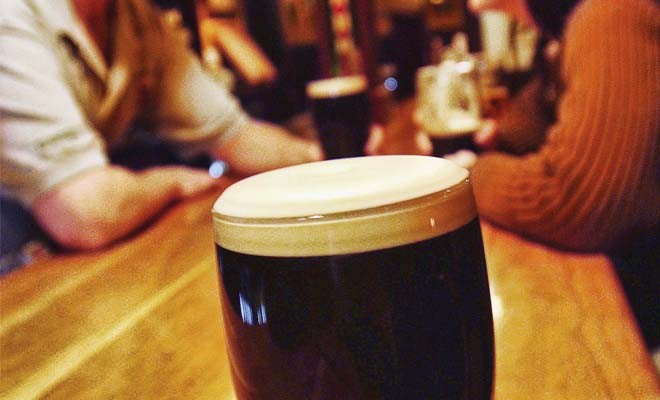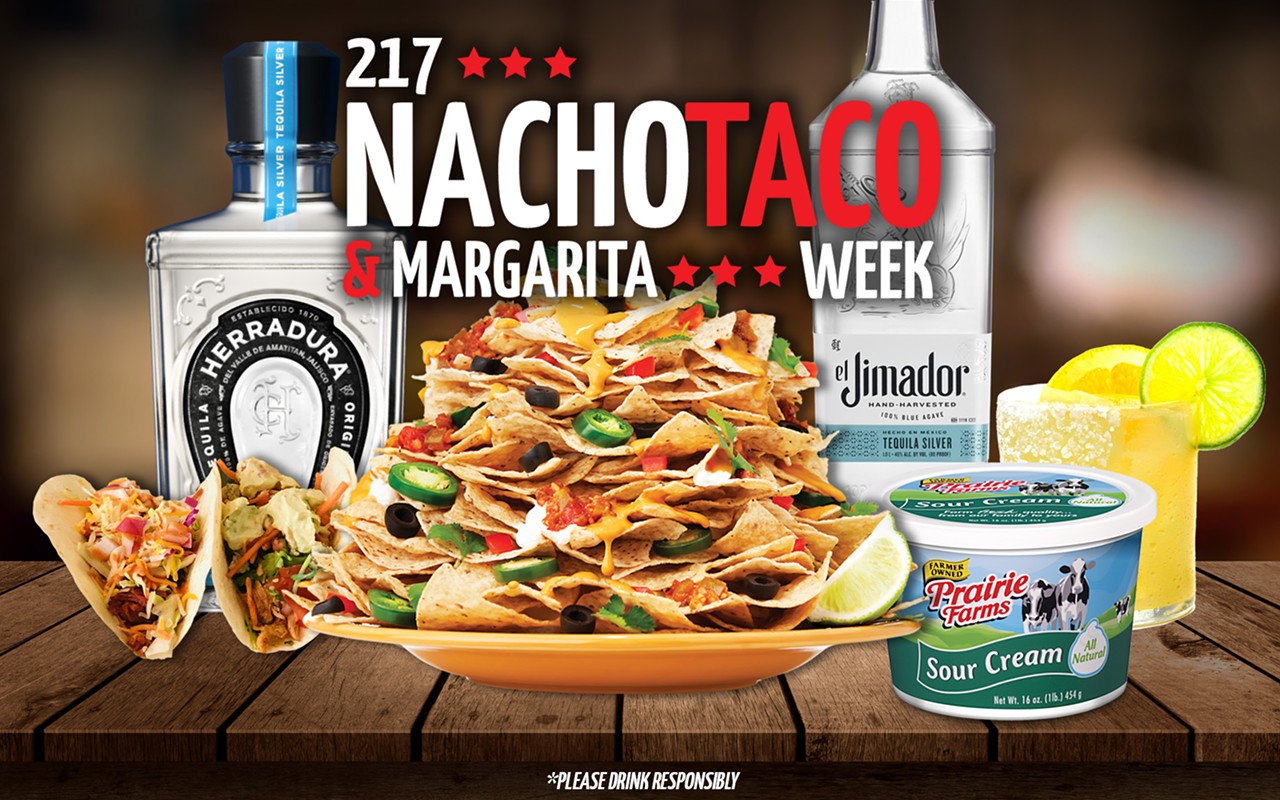
If so, you won’t be alone. No other libation or comestible is as closely associated with Ireland as the delicious stout that originated in Dublin more than 250 years ago. It’s certainly more traditional than corned beef and cabbage, which is associated with American St. Patrick’s Day festivities, and not at all with Irish ones.
If you want to drink Guinness that’s truly Irish, you’ll have to find a pub or bar that serves Guinness draft (or as it’s spelled in Ireland, draught). It won’t be difficult; there are several Springfield spots that have Guinness on draft.
I’d heard that the only city in America that had Irish-brewed Guinness on draft was Boston, and that it was discernibly better. But Springfield beer expert Kevin Brown, columnist for Ale Street News, America’s largest “brewspaper,” set me straight: “I believe some years ago we were getting Canadian Guinness, but now all draught Guinness in the U.S. comes from Ireland. Bottles still mostly come from Canada. We were in Dublin a few years ago and honestly I didn’t see any difference in a pint there and in a good bar here.”
Stout beers were originally among the strongest beers: the strongest version of strong dark beers known as porters. Early stouts (as well as some artisanal brews today) were richly flavored, dark and heavy, made from pale malt, roasted barley, and often caramel malt. Guinness was among the first to use roasted barley, which has become a hallmark of stout’s flavor profile. But although Guinness has that rich flavor, it’s not at all heavy and has only 4-percent alcohol. With just 126 calories, and 10 grams of carbohydrates per 12 ounces, this dark beer is lighter than some relatively flavorless brews designated as “light.”
Today, Guinness is by far the most widely popular dark beer in the world: over 10-million glasses are consumed daily, more than 2 billion yearly. An early example of globalization, by 1811, Guinness was being exported to Lisbon and soon after to countries in Africa, the Caribbean, Southeast Asia, New Zealand and Australia. Today, it’s sold in 120 countries and brewed in 25.
Most beers are food-friendly, none more so than Guinness, whether bottled or draft, original- or extra-style. It’s a wonderful complement to oysters, so much so that I’ve come to prefer Guinness and other beers over wines traditionally paired with oysters, such as Sancerre. Brown and Court Conn, of Conn’s Catering and The Inn at 835, created the SOB (Springfield Oyster and Beer) festival in 2011. It’s held in early September and each year has drawn increasingly enthusiastic crowds.
Guinness and other stouts aren’t good choices just with oysters or other savory dishes. They pair equally well with sweets, especially chocolate. Some artisanal beer-makers even ferment their stouts over chocolate nibs (cocoa beans that have been roasted, shelled and cracked). The cake below showcases stout’s affinity for chocolate. The ice cream is reminiscent of malted milk shakes. They are delicious by themselves, but even better when served together.
Chocolate stout spice cake
- 1 c. Guinness stout, or other Irish-style or chocolate stout
- 1 c. light molasses or pure maple syrup
- 1 1/2 tsp. baking soda
- 2 c. all-purpose unbleached flour
- 3/4 c. unsweetened cocoa powder, plus additional for dusting the pan
- 1 1/2 tsp. baking powder, preferably an aluminum-free brand, such as Rumford
- 1/2 tsp. ground cloves
- 1/2 tsp. ground cinnamon
- 1/2 tsp. freshly grated nutmeg
- 1/2 tsp. salt
- 3 extra-large eggs
- 1/2 c. dark brown sugar
- 1/2 c. granulated sugar
- 1 c. vegetable oil
Preheat the oven to 350 F.
Grease a 10-inch Bundt pan and “flour” it with cocoa powder. When all the surfaces are coated, turn the pan upside down and rap it sharply to remove any excess cocoa.
Combine the stout and the molasses in a medium saucepan and bring to a boil over medium-high heat. Remove from the heat and whisk in the baking soda. It will foam up, so be careful.
Combine the flour, 3/4 cup cocoa powder, baking powder, spices and salt in a large bowl and mix thoroughly.
In the bowl of an electric mixer beat the eggs and two sugars until they make a thick and syrupy mix. Whisk in the oil and then the beer mixture.
Stir the flour mixture into the liquid mixture, beating slowly until the mixture is just combined. Do not overbeat.
Pour the batter into the prepared pan. Bake for 30-40 minutes. The cake is done when the sides have begun to pull away from the pan and the surface is just starting to crack. A skewer inserted into the center should come out mostly clean.
Let the cake cool in the pan for 30 minutes, then turn out onto a plate or rack. Serve warm or at room temperature. Wrapped tightly, it keeps well for several days.
Guinness ice cream
- 12 oz. bottle Guinness stout
- 3 T. light molasses or cane syrup
- 1/2 vanilla bean
- 1/3 c. sugar
- 1 c. whole milk
- 1 c. heavy cream
- 3 extra-large egg yolks
- Pinch of salt
- 1 tsp. vanilla extract
Pour the Guinness into a small saucepan, bring to a boil over medium-high heat, and boil until the stout is reduced to 2/3 cup. Stir in the molasses and set aside.
Put the sugar in a medium saucepan. Split the half vanilla bean in half lengthwise and with a tip of a paring knife, scrape the seeds into the sugar. If you will be whisking the eggs and cream together by hand, rub the sugar and vanilla together with your fingers until there are no clumps of vanilla seeds. If you are using a blender or food processor to combine the eggs and cream, this is not necessary.
Add the milk and cream to the sugar/vanilla mixture and place over medium-high heat, whisking until the sugar is dissolved. Cook, stirring frequently, until the mixture just comes to a boil. Remove from the heat, cover the pan, and let the mixture steep for at least 30 minutes.
Place the egg yolks, vanilla extract and salt into the container of an electric blender or bowl of a food processor. Alternately you can whisk them together in a large bowl. Whisk thoroughly.
Slowly add the cream mixture to the eggs in a very small stream at first, beating/blending constantly. Once you’ve added about a half cup of the cream, you can add the rest more rapidly. When the mixture has been thoroughly combined, return it to the pan.
Stir the stout/molasses mixture into the custard and return the pan to the stove over medium-low heat. Cook, stirring constantly, until the custard has thickened and coats the back of a spoon, 6-8 minutes. It should not come to a boil.
Remove from the heat and let the mixture come to room temperature. If it seems at all lumpy, either strain it or put it in the blender and blend until smooth.
Chill the custard until it is very cold, two hours or longer. Process in an ice cream freezer to the manufacturer’s instructions. Makes about 1 quart.
Contact Julianne Glatz at [email protected].


















